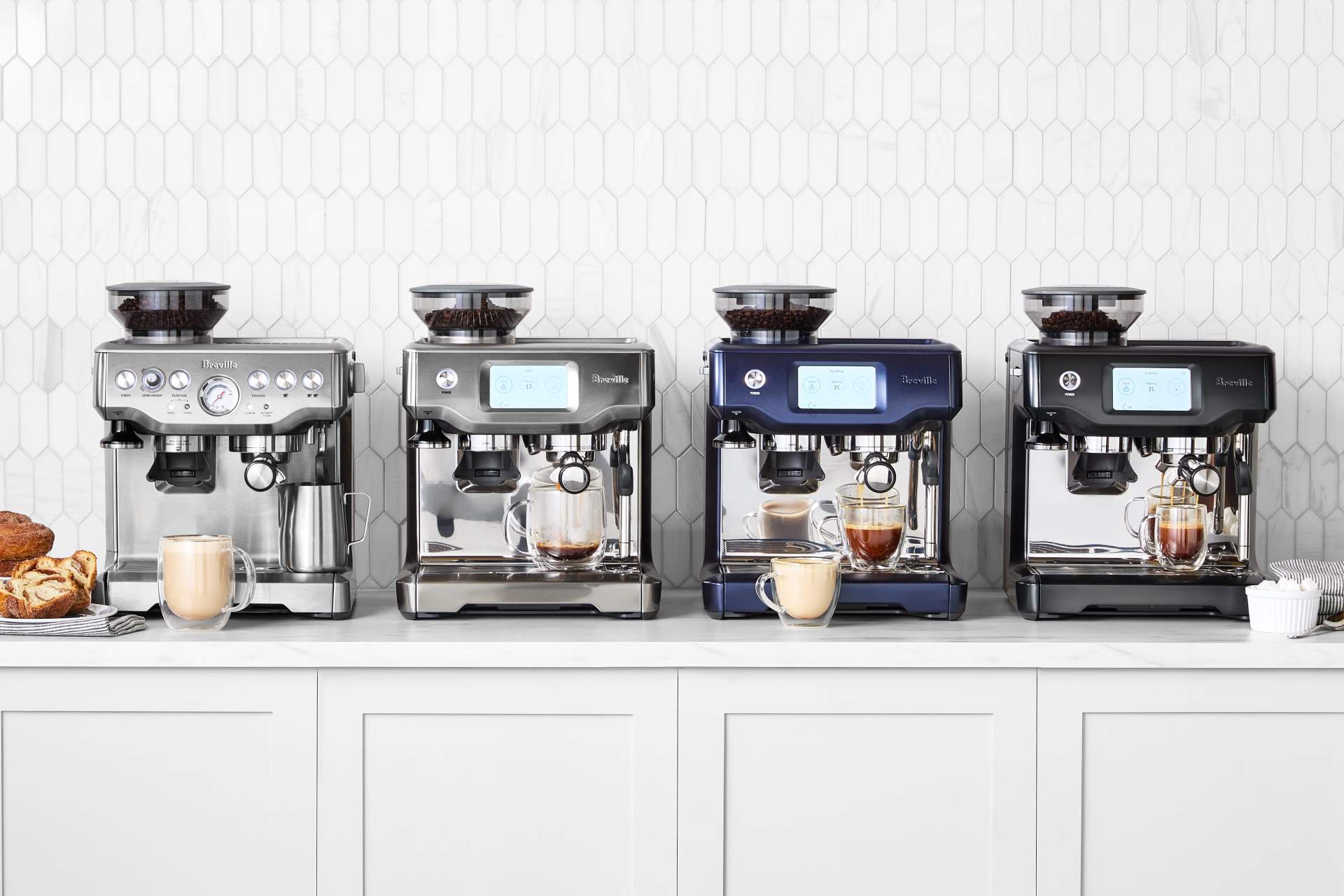Your morning brew, made by you, perfected by Breville.


With so many varieties of saucepans on the market, you might wonder which one is best for your needs. This handy guide will help you choose the best saucepan for your kitchen that will round out your cookware collection.
A saucepan is a small, deep pot used most often for preparing liquids on the stove. They’re deeper than a standard skillet or frying pan, but shallower and smaller than a stockpot.
Saucepans are made with a flat bottom and steep, tall sides to prevent splatters. They usually come with a long handle, giving you control whether you’re poaching, blanching, boiling or quickly heating foods.
Like most cookware, saucepans are made from a variety of materials and the one you choose will be based mostly on your needs.
Stainless Steel

Stainless steel is considered the “workhorse” of kitchen cookware. It’s durable, doesn’t react with food, and its ability to heat up quickly and retain that heat means it’s ideal for browning and braising. Usually, stainless steel is also safe for the dishwasher, oven and broiler, which means it can be used for a variety of dishes and cooking methods.
Nonstick

One of the downsides to stainless steel is that food tends to stick to the surface. If this bothers you, look for a nonstick option. Not only are they easy to clean, but nonstick saucepans are versatile enough to be used on any kind of cooktop and, depending on the primary material, can withstand heat up to 500°F.
The downside to nonstick? While most manufacturers advertise their nonstick pans as “utensil safe,” it’s always best to err on the side of caution and swap out your metal whisk or spatula for a rubberized or silicone one.
Cast Iron

Few materials are as tried-and-true as cast iron. It’s a great option for saucepans because it heats up slowly and evenly, giving you much more control over the cooking process.
As far as choosing which type of material is right for you, a cast iron saucepan coated in enamel is an excellent option. It doesn’t require any seasoning, is just as durable—if not more—as traditional cast iron and it doesn’t react with certain foods.
Enamel-coated cast iron is much more prone to chipping, however, and can be much heavier when full of food or liquid, so keep that in mind when making your selection.
It can be tough to decide what size saucepan you might need—there are tons of sizes available! A good rule of thumb when trying to decide what size will fit your needs is to go by the volume of the saucepan.
For example, a 1-quart saucepan is ideal for one person. But if you’re cooking for a couple, you might want a 2-quart, medium saucepan. A family would likely be better off with a 4-quart, large saucepan.
Pros of small and medium saucepans:
Pros of large saucepans:
Believe it or not, saucepans vary greatly in their shape and design.
A traditional saucepan has straight sides and a flat bottom with more of a square or rectangular profile. These are usually a little more versatile and work well for boiling or steaming. However, due to their shape, they tend to trap food easily and can be harder to clean.
A saucier, on the other hand, has a tapered shape similar to a bowl, with a rounded bottom and sides and more of a semicircle profile, which makes whisking and stirring much easier. Because of their shape, though, sauciers are usually shorter than saucepans and offer less versatility.
There are a couple of other features to consider when it comes to the shape or structure of your saucepan:
So, as you can see, the kind of saucepan you buy depends mostly on your needs – whether it’s the size of the meal you’re cooking, the material you’re most comfortable with or your cooking style. You can peruse our selection of saucepans on our site and select from a variety of options to find the one that’s right for you.
Happy cooking!
Join The Conversation